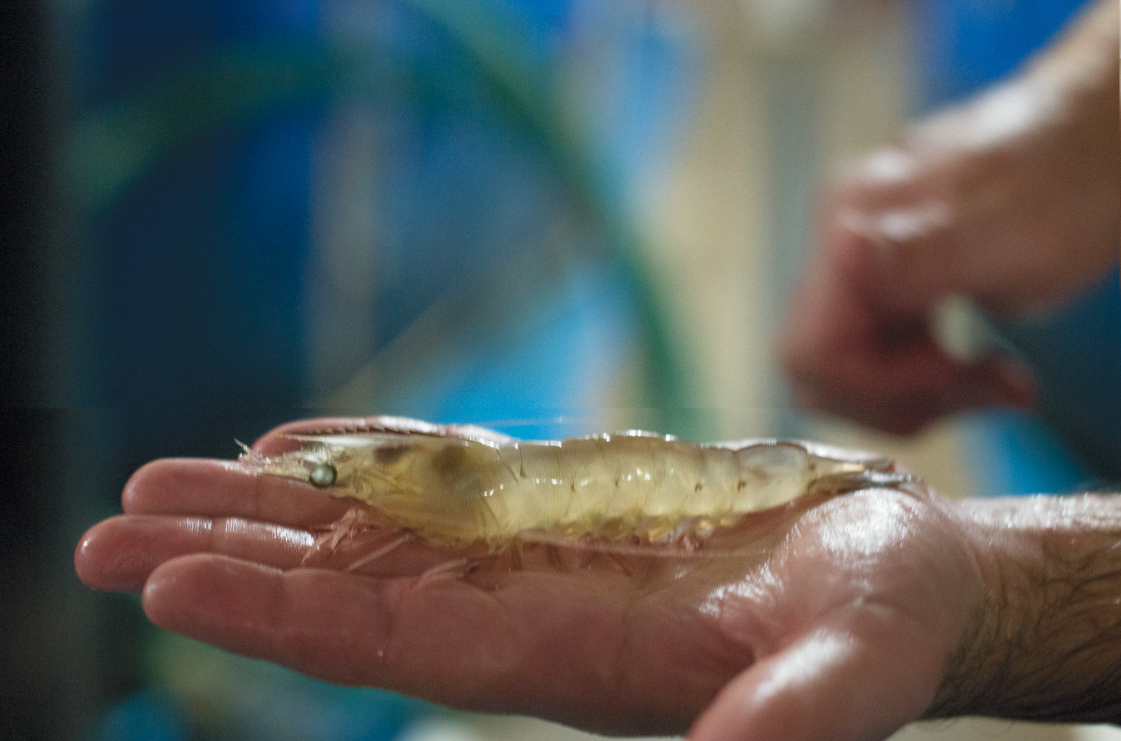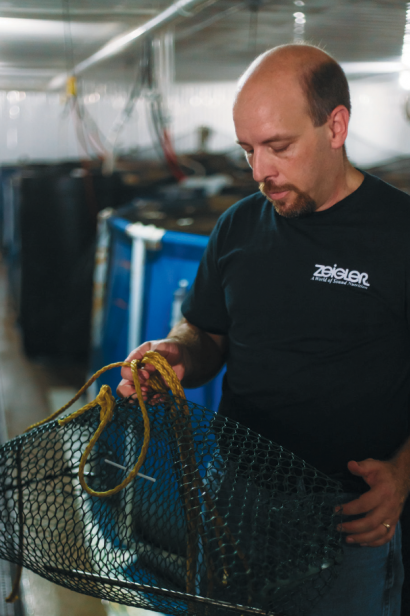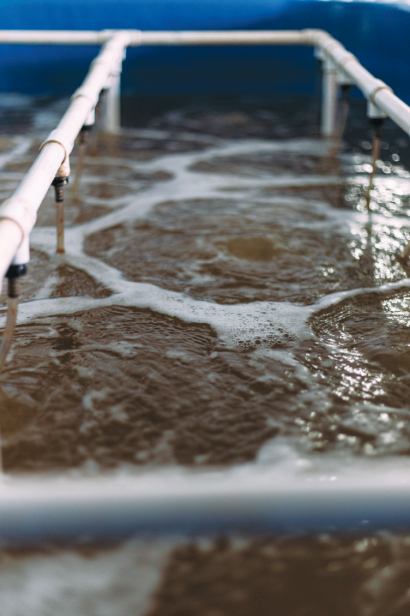Hoosier Shrimp Farms Make a Splash
Tucked in amidst more familiar crops like corn and soybeans, Indiana boasts a growing number of shrimp farms. Yes, you read that right: Hundreds of miles from the nearest ocean, a handful of Hoosier farmers are producing shrimp. These farms provide an alternative to both domestically caught wild shrimp and imported farmed or wild shrimp. Growing concern over the safety of wild shrimp due to water pollution and of foreign farmed shrimp due to inconsistent quality and environmental impact have created demand for a fresher and safer alternative.
Domestically, the shrimping industry in the Gulf of Mexico is still struggling to recover from the Deep Water Horizon oil spill of 2010. Although recent studies show that the quality of the shrimp is recovering, the numbers of shrimp caught in an average haul are still much lower than they were prior to the spill. However, shrimp remains the most popular type of seafood consumed in the U.S., accounting for a quarter of seafood consumption.
The traditional alternative to domestically caught shrimp has been imported farmed or wild-caught shrimp. Although some of these sources receive a thumbs up for quality, safety and environmental impact (FishNavy.com provides a concise breakdown), many are questionable. Furthermore, food safety inspections struggle to keep up with the volume of shrimp and other seafood being imported.
The FDA inspects only 2%–20% of seafood that is imported. Shrimp comprise only a fraction of what is inspected, and 80% of the shrimp that are inspected are ultimately rejected. Rejected shrimp are declined for various reasons, including elevated levels of antibiotics, preservatives and other additives, as well as inferior quality. In addition to food safety concerns, irresponsibly managed shrimp farms raise environmental concerns and have been associated with aquatic “dead zones.”
But does Indiana-farmed shrimp provide a viable alternative?
There are two main types of shrimp farming in Indiana: fresh water shrimp (also called prawns) and saltwater (or marine) shrimp. Fresh water farms are mostly located in Southern Indiana because the longer growing season is better suited for the outdoor ponds that are used. These ponds are drained and harvested in the early fall. Saltwater farms are scattered throughout the state and use indoor pools, which allow for better temperature control and make it possible to produce shrimp year-round.
On a recent visit to BDJS (Best Darn Jumbo Shrimp) Farms in Cutler, I saw a marine shrimp operation firsthand. BDJS is owned and operated by the Barbour family and has been in business for over three years. As with other shrimp farms in Indiana, you aren’t likely to find their shrimp in grocery stores. Instead, you can try their shrimp in locally sourcing restaurants including Bluebeard, Plat 99, R Bistro, Cerulaean, Black Market and others. You can also buy shrimp directly from the farm, or in specialty food stores and meat markets.* (Some farms also participate in farmers’ markets.)
Barbour grows its Pacific White shrimp in 18-foot above-ground swimming pools with pumps to circulate water. Doug Barbour uses swimming pools because they are relatively simple to set up and work well with the environmentally sustainable business model at the heart of BDJS. Barbour strives for a zero-waste facility: Pools are recyclable if they need to be replaced, water is recirculated and micro-organisms are used to maintain a beneficial ecosystem. Barbour says the heaters used to maintain water temperature use less energy than an average household in a year. The only additives used in the water here are baking soda and sugar.
Although BDJS and a growing number of other farms recirculate water or, in the case of outdoor prawn farms, drain water into holding tanks for future use, some farms don’t. Dumping of water has led to environmental concerns of wasted water and potential contamination. Barbour and others like him act as consultants for farmers hoping to make the switch to more sustainable systems. Another concern for shrimp farmers (although not in Indiana so far) has been viral infection of shrimp, a main area of aquaculture research for the USDA.
Some potential consumers of Indiana farmed shrimp are skeptical of their quality and concerned about the implications of moving coastal industries inland. It does, after all, defy logic to find saltwater shrimp pools in the middle of cornfields. But these shrimp do provide a fresher and safer alternative to many of their imported counterparts. And, as more farms move toward contained systems with little to no waste, they will become a more environmentally sustainable option.
Where to Find Indiana Shrimp
SALTWATER
BDJS (Best Darn Jumbo Shrimp) Farms, Cutler
Bedrock Springs Seafood Farm, Ladoga
RDM Farms, Fowler
Big Barn Shrimp Farm, Flora
JT Shrimp, Wheatfield
Indiana Aqua Farms (White Diamond Shrimp), Columbus
FRESH WATER
Eddy-Lynn’s Shrimp Farm, Coatesville
Connor Shrimp Farm, Monrovia
RETAIL
Goose the Market
Moody’s Butcher Shops
Sources
USDA.gov
Ag.Purdue.edu
FishNavy.com
Doug Barbour, BDJS Farms







